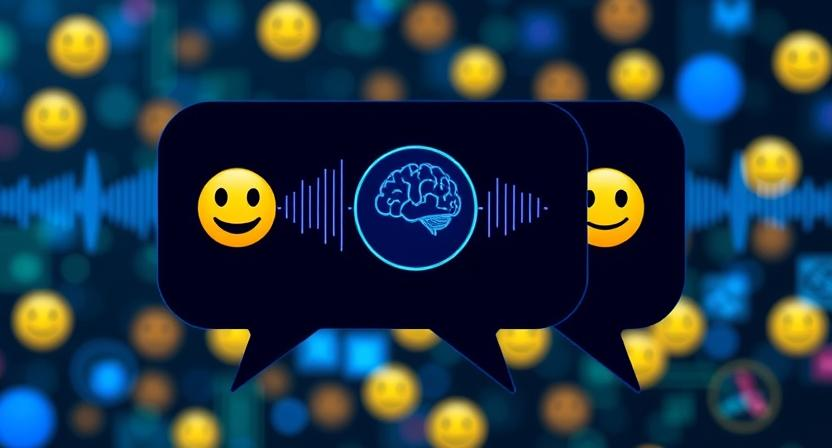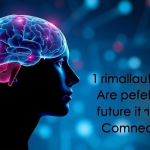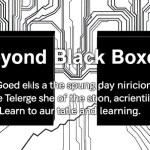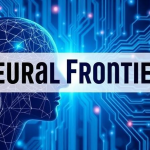In a world once ruled by written and spoken language, a quiet revolution is unfolding—a shift toward textless, voice-free communication fueled by emerging technologies and the human need for faster, more intuitive connections. Welcome to the post-verbal era, where emojis, gestures, augmented reality (AR) expressions, and even brainwave-driven interfaces are becoming viable alternatives to traditional communication methods. As strange as it may seem, the future of conversation may be silent, visual, and neural.
The Decline of Traditional Language
The dominance of text and speech has long defined human interaction, especially in the digital age. But these methods are increasingly showing limitations. Text lacks emotional nuance. Voice requires context and bandwidth. Both demand attention and time—resources that are becoming more fragmented in a hyper-connected world.
Today’s younger generations are already moving beyond the conventional. Gen Z and Gen Alpha favor quick, visual symbols—emojis, GIFs, and stickers—over lengthy messages. TikTok trends prioritize expressive visuals over verbose explanations. Silent video reactions, facial filters, and virtual gestures are becoming the primary currency of emotional exchange. This shift signals more than just a change in preferences; it reflects a fundamental rethinking of how we connect.
Emojis as Proto-Language
Once dismissed as playful add-ons, emojis are evolving into a proto-language. According to linguists, emojis fulfill many functions of language: they convey emotion, modify tone, replace words, and even form sequences that convey complex meanings. For example, a simple combination like 🔥💪👏 can express admiration, strength, and praise without a single word.
Platforms like Slack and Discord have embraced this shift by integrating emoji-based reactions into their core functionality, encouraging faster and more contextually rich interactions. Even business communications are not immune—emoji usage in professional emails is on the rise, signaling an evolving etiquette in the digital workspace.
The Gesture Economy and AR Expressions
The rise of AR has unlocked a new dimension of expression—one that’s physical, immersive, and nonverbal. With technologies like Apple’s Vision Pro and Meta’s Quest series, users can now communicate with head nods, eye contact, and hand gestures inside virtual environments. These movements are interpreted by algorithms and translated into responses, reactions, or emotional cues.
Snapchat and Instagram filters already demonstrate how AR can alter facial expressions in real-time to convey emotion. Avatars in the metaverse mimic body language and facial nuance, fostering a sense of digital intimacy that text or voice alone can’t provide.
This is the emergence of the gesture economy—a system where movements become monetizable expressions of intent, emotion, or action. Imagine a virtual high-five replacing a “like,” or a digital wink closing a business deal in a VR meeting room.
Brainwave Interfaces: Communication at the Speed of Thought
Perhaps the most futuristic leap comes from brain-computer interfaces (BCIs), which allow users to send commands and, eventually, entire thoughts using neural activity. Companies like Neuralink, Synchron, and NextMind are pioneering this frontier, aiming to decode intention from brain signals without requiring any verbal or physical action.
In a world where thoughts can be directly interpreted by machines, the latency of speech and typing becomes a bottleneck. Silent, brain-driven communication could be instantaneous, transcending language barriers and disabilities. A thought-based tweet. A mind-controlled message. An emotion felt and instantly shared. It’s not science fiction anymore—it’s rapidly becoming science fact.
Platforms Redefining Communication
Several platforms are already pushing the boundaries of post-verbal interaction:
- Replika uses AI-powered avatars that communicate through facial expressions and emotional mirroring.
- Discord supports ambient presence with reaction emojis and silent status cues.
- Meta Horizon Workrooms integrates hand-tracking and facial mirroring to simulate real-life expressions in virtual meetings.
- Neuralink’s demos hint at future platforms where typing may be obsolete, replaced by mental intent.
These platforms aren’t just novelties—they’re shaping a future where accessibility, efficiency, and intimacy redefine what it means to “talk.”
Accessibility Reimagined
One of the most transformative aspects of silent communication is its potential for inclusivity. For individuals with speech impairments, autism spectrum disorders, or neurodegenerative diseases, voice-free interfaces offer a level playing field. Tools like Tobii’s eye-tracking systems or BCI spellers allow users to convey complex thoughts without uttering a word.
Similarly, emojis and gestures bypass linguistic boundaries, making global communication more inclusive. A smiley face or a thumbs-up carries the same meaning across continents, reducing dependence on translation tools and cultural misunderstandings.
Speed, Simplicity, and Emotional Bandwidth
Communication in the post-verbal era is not just more inclusive—it’s faster and emotionally richer. A reaction emoji is processed faster than reading a sentence. A facial gesture conveys more subtlety than a phone call. Brainwave communication promises instantaneous thought sharing, with no lag in comprehension.
This high-bandwidth emotional communication enables deeper intimacy in digital relationships. Long-distance partners can exchange emotional states via wearable biosensors. Friends can “feel” each other’s moods in real-time via mood-mapping AR. These aren’t just convenience features—they’re ways of deepening connection in a disembodied digital world.
Challenges and Ethical Questions
Despite its promise, post-verbal communication raises pressing ethical and psychological questions. Who owns your brainwave data? How can emotional manipulation be prevented in environments where every gesture and expression is monitored? Will the erosion of language lead to a reduction in critical thinking and verbal reasoning?
Additionally, context can still be lost. Emojis are culturally interpreted. Gestures differ across regions. Brainwave signals can be misread. As with all revolutions, careful regulation and design thinking will be necessary to ensure equity, privacy, and psychological health.
What Comes Next?
The next phase of communication is not about replacing speech or writing, but augmenting them. Just as writing didn’t replace oral storytelling, and printing didn’t eliminate handwriting, silent communication won’t make talking obsolete—but it will transform its role.
In a hyper-digital world, the way we express, react, and connect must evolve to keep up with the pace of life and the richness of human emotion. As AR glasses become mainstream, as BCIs shrink in size and cost, and as neural decoding becomes more accurate, we may find ourselves living in a world where language takes a back seat to intuition, emotion, and intention.
Conclusion: The End of Words, or Just the Beginning?
We are witnessing the rise of a new linguistic order—one shaped not by dictionaries, but by emojis, gestures, virtual presence, and thought. This isn’t the death of language; it’s its evolution. The post-verbal era offers a tantalizing glimpse into a future where communication is instant, immersive, and universally accessible.
In the end, the silence may speak louder than words.






Leave a Reply